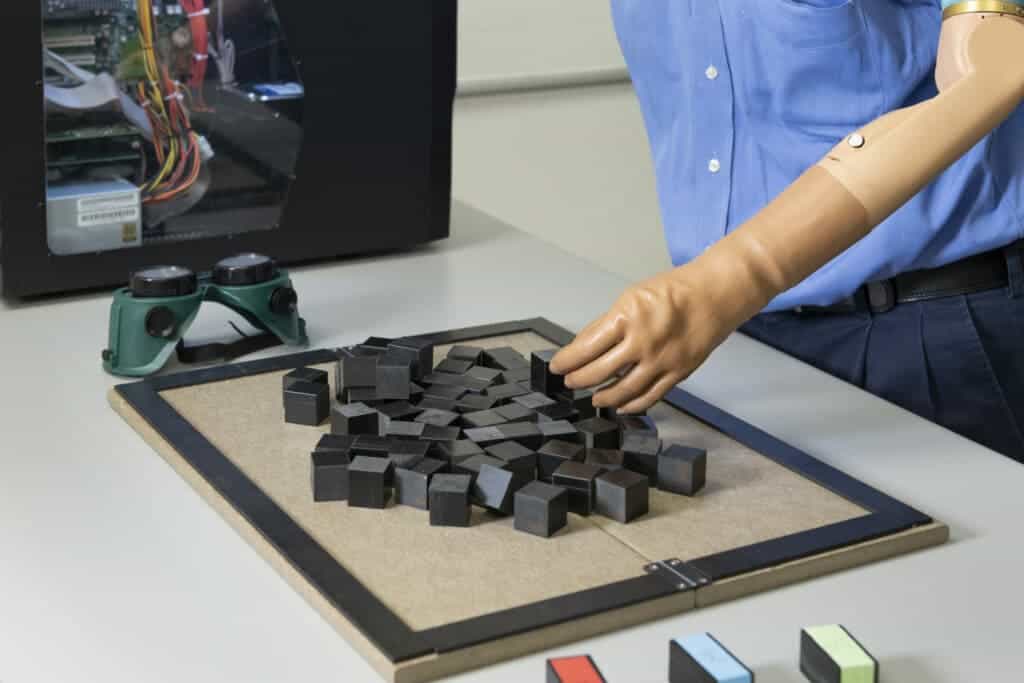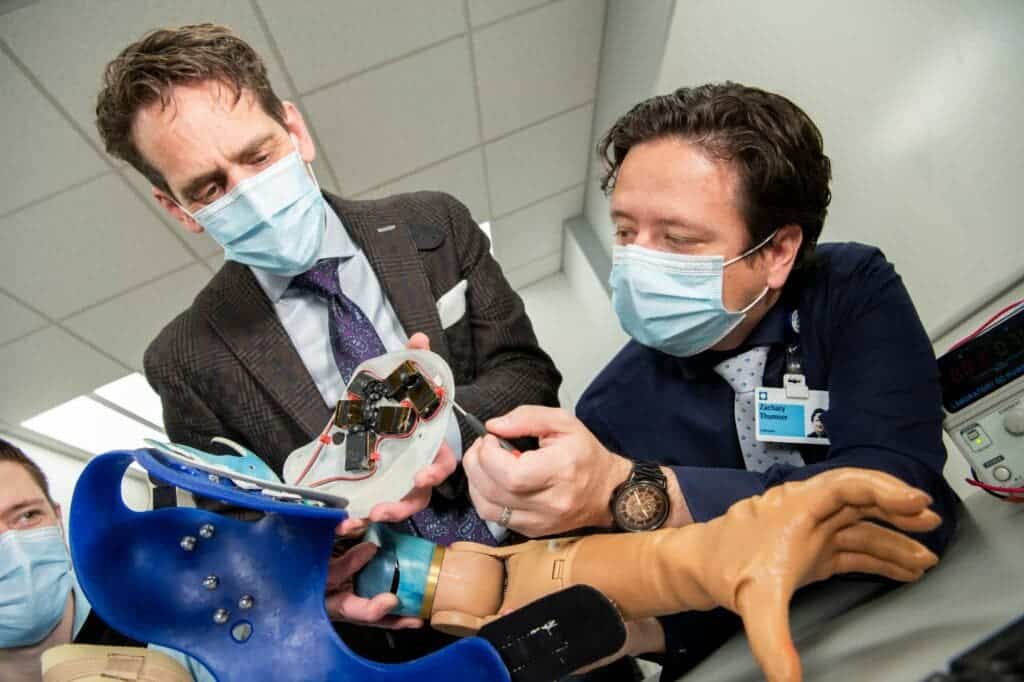Researchers from the US have just created a revolutionary bionic arm for people with upper-limb amputations. It’s one of the first prosthetic arms to deploy all functions of the hand at the same time, allowing users to control it using a brain-computer interface to initiate the interaction.

The prosthetic and orthotics market is expected to reach $8.6 billion by 2028, according to a recent report, with a growing geriatric population and sports injuries driving the market growth. But after a series of innovations, artificial limbs haven’t changed that much in recent years, with the ones currently on the market not giving people intuitive sensations.
With this in mind, researchers working at the Cleveland Clinic developed a first-of-its-kind bionic arm that combines three important functions. It gives those who use it the intuitive feeling of opening and closing the hand, as well as intuitive motor control and touch and grip kinesthesia, as the researchers explain in their paper.
“We modified a standard-of-care prosthetic with this complex bionic system which enables wearers to move their prosthetic arm more intuitively and feel sensations of touch and movement,” researcher Paul Marasco said in a statement. “It’s an important step towards providing people with amputation with complete restoration of natural arm function.”
Combining touch, grip, and motor control can trick the senses and brain of the prosthetic wearer into thinking it’s real, Marasco explained. Patients control the prosthetic by sending impulses from the brain when they want to use it or move it. The arm also works with a set of sensors to get information from the environment and sent back to the brain, mimicking the biological mechanism.
The researchers tested their new bionic arm in real life with two individuals that had upper limb amputations. One of the test subjects, Claudia Mitchell, told Daily Mail that the arm made a “huge difference” in her life, allowing her to do everyday activities that she couldn’t before, such as cutting a peach and picking up a make-up bag with her thumb and forefinger.
This is a big step forward, as conventional prosthetic arms can’t recreate such fine movements. Amputees instead have to keep a close eye on things that you or I would do without a second thought. Now, with the new bionic arm, the study participants reverted back to reflexive behaviors they had from before the amputation, such as intuitive grip.
“Perhaps what we were most excited to learn was that they made judgments, decisions and calculated and corrected for their mistakes like a person without an amputation,” Marasco said. “With the new bionic limb, people behaved like they had a natural hand. Normally, these brain behaviors are very different between people with and without upper limb prosthetics.
Attention to details
The newly developed bionic arm requires three main components. Apart from the arm itself, it involves realigning nerve endings as well as using small robots that work to control the use of the arm. It all starts with a surgical procedure to take the amputee’s unused nerve endings within the healthy part of the arm and plug them into the site of amputation.
The arm is then placed onto the amputation site, with very small robots fit into the socket. The robots then stimulate the nerve endings that are now attached by pressing on relevant areas of the site. For Marasco, “you can buzz the muscles” and generate “perceptual illusions of complex hand movement” on the people that use the new bionic arm.

Instead of starting from scratch, the researchers worked with prosthetic limbs currently available in the market and altered them, adding advanced computing, touch, and movement sensors. By doing so, they hope the new bionic arm will reach rehabilitation clinics much faster and also be more cost-effective. “It looks like any other prosthetic,” Marasco explained.
“Over the last decade or two, advancements in prosthetics have helped wearers to achieve better functionality and manage daily living on their own. For the first time, people with upper limb amputations are now able to again ‘think’ like an able-bodied person, which stands to offer prosthesis wearers new levels of seamless reintegration back into daily life,” he added.
The research behind the arm was published in the journal Science Robotics.









